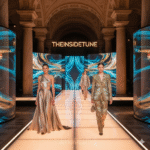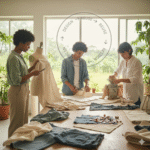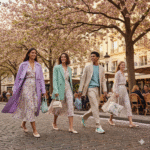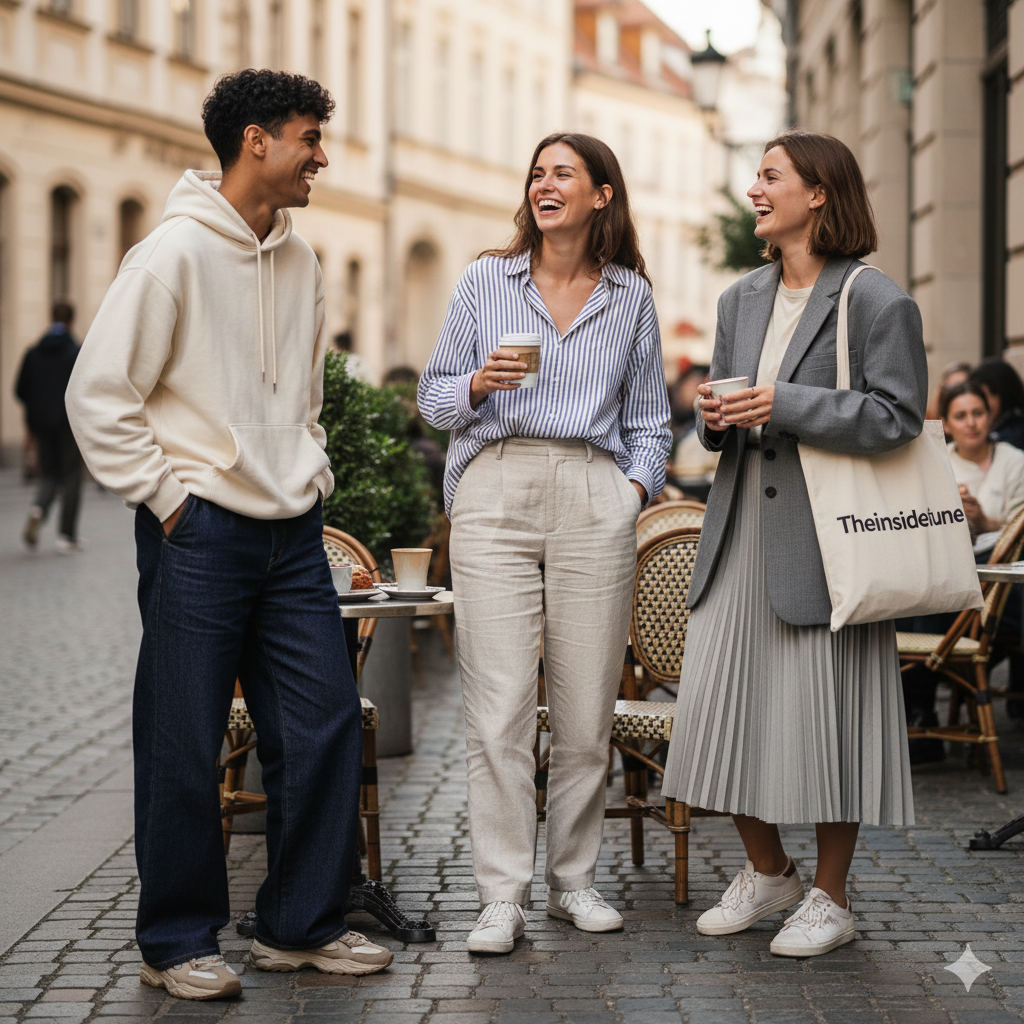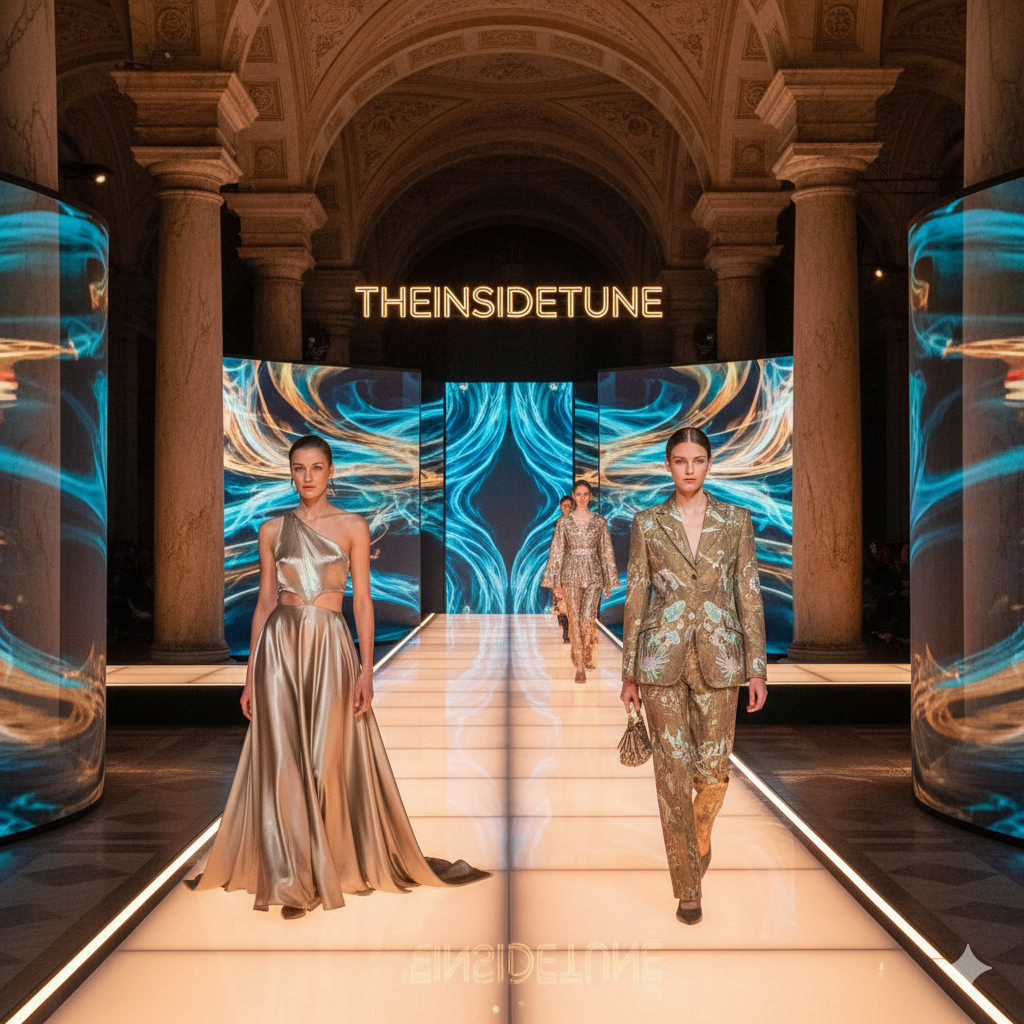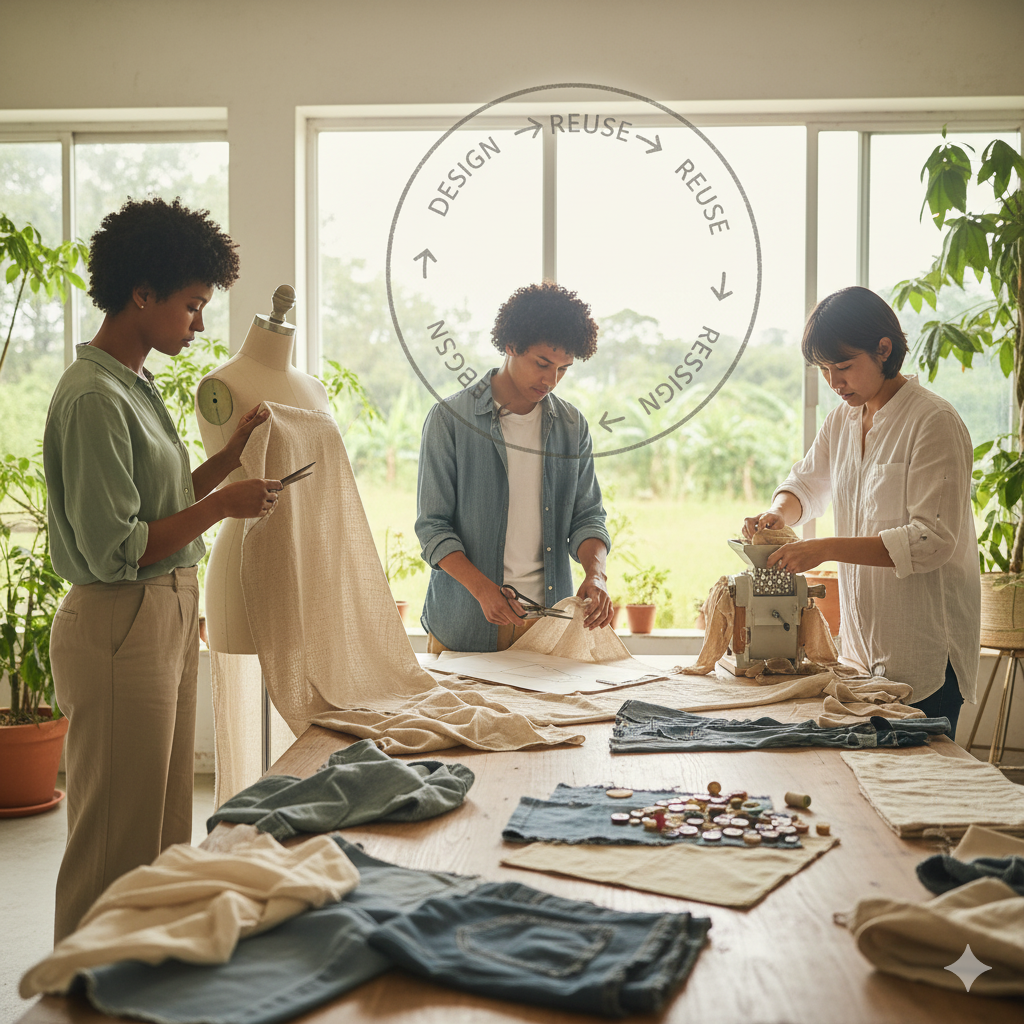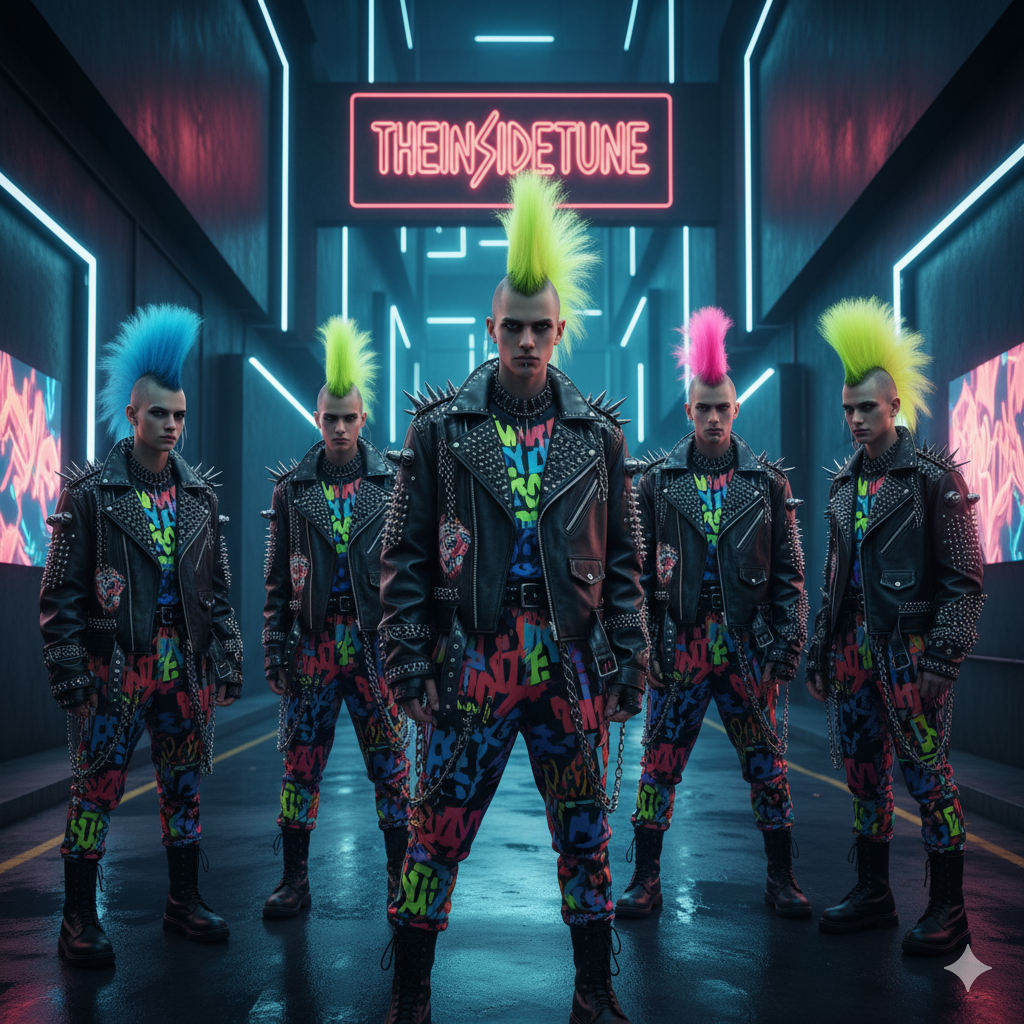Gender-Neutral and Androgynous Fashion in 2025: Redefining Style Beyond Labels 👕✨
Introduction: Fashion Beyond Labels 🌍👗👕
Fashion has always been about boundaries. For centuries, shops, closets, and even runways have been divided by invisible walls: his side and her side. Shirts buttoned one way for men, another for women. Fabrics and cuts that whispered, “This is not for you.” The rules were clear—and limiting.
But here we are in Europe, 2025, and something extraordinary is happening. Those walls? They’re finally coming down. 🚪✨
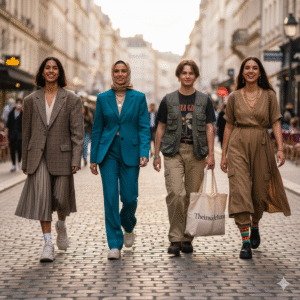
Across the continent—from the minimalist boutiques of Copenhagen to the buzzing streets of Berlin—you’ll see people dressing in ways that feel freer, bolder, and more authentic than ever. Young men in flowing skirts, women in sharp suits, non-binary folks rocking oversized blazers with sneakers. It’s not about crossing into “the other side” anymore. It’s about erasing the sides altogether.
This is the world of gender-neutral and androgynous fashion—a space where clothing no longer dictates identity, but rather expresses it. 🌈
🌟 Why 2025 Feels Different
This shift didn’t happen overnight. For years, androgynous style simmered in subcultures, fueled by icons like David Bowie, Grace Jones, Prince, and countless rebels who refused to play by fashion’s binary rulebook. But in 2025, it feels less like rebellion and more like evolution.
-
Fashion weeks are showcasing entire collections without a “menswear” or “womenswear” tag.
-
Retail stores are redesigning layouts so customers shop by style, not gender.
-
And perhaps most importantly, everyday people are realizing they don’t need to “fit in” with old categories—they can build wardrobes that reflect their true selves.
It’s a movement that goes beyond clothing. It’s about identity, inclusivity, and freedom.
👫 Fashion as Self-Expression, Not Restriction
Clothes have always been powerful. They can be armor, art, or rebellion. But too often, they’ve also been a box—a set of expectations about what you should or shouldn’t wear based on gender.
In 2025, we’re watching that box crumble. More and more, people are choosing pieces because they love them—not because a label tells them they’re “for men” or “for women.” Oversized shirts, fluid silhouettes, neutral palettes, bold tailoring—it’s all fair game, for everyone.
And the effect? Liberating. 🙌
💡 A Cultural Mirror
Fashion has always mirrored the times. In the 1950s, it celebrated conformity. In the 1970s, it celebrated rebellion. Today, it celebrates something deeper: the right to define yourself.
Europe in 2025 is not just dressing differently—it’s thinking differently. The rise of gender-neutral and androgynous fashion reflects a generation that values fluidity over rigidity, authenticity over conformity, and self-expression over old rules.
This isn’t just about new silhouettes—it’s about a new story. One where style belongs to everyone.
👉 And that’s the heart of our journey. In this blog, we’ll dive into what gender-neutral and androgynous fashion really means, how Europe became its epicenter, and why it’s not just a trend but a cultural shift that could redefine the future of style itself.
Because maybe the most stylish thing you can wear in 2025 isn’t a specific brand or cut—it’s freedom. ✨
What is Gender-Neutral and Androgynous Fashion? 🌈
Before we go any further, let’s pause and unpack the terms. Because while gender-neutral and androgynous fashion often get mentioned together, they’re not exactly the same thing. And understanding the difference helps us appreciate just how rich this style revolution really is.
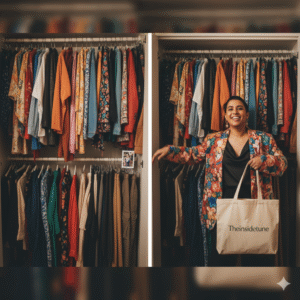
👕 Gender-Neutral Fashion: A Wardrobe for Everyone
Gender-neutral fashion is exactly what it sounds like: clothes made without gender in mind. No “men’s section” or “women’s section,” just designs that anyone can wear.
Think of oversized hoodies, tailored blazers, relaxed trousers, or classic button-downs. These pieces don’t scream “male” or “female.” They’re simply… clothes. And that’s the beauty of it.
What makes gender-neutral fashion powerful is its inclusivity. It gives everyone—whether you identify as male, female, non-binary, or anywhere in between—a chance to wear what feels right without having to cross imaginary boundaries. It says: fashion belongs to people, not categories.
🌟 Androgynous Fashion: Blurring the Lines
Androgynous fashion, on the other hand, is a little different. It’s not just about being neutral—it’s about blending traditionally “masculine” and “feminine” styles to create something beautifully in-between.
Picture a sharp suit with delicate jewelry. Or a flowing skirt styled with chunky boots and a crisp shirt. It’s fashion that borrows from both sides and makes them dance together. 💃🕺
Androgyny often feels a little edgier, a little more experimental. It’s less about erasing gender signals and more about remixing them until the old rules lose their grip.
🎭 Why the Distinction Matters
So why separate the two? Because they reflect different approaches to the same cultural shift:
-
Gender-neutral fashion removes the walls.
-
Androgynous fashion plays across them.
Together, they expand what’s possible. They make room for people who want simplicity and people who want experimentation. For some, freedom means blending; for others, it means neutrality. And neither is more “authentic” than the other.
🌍 Beyond Words—Into Identity
But here’s the thing: while definitions help, fashion is never just about terminology. In 2025, people aren’t asking, “Am I wearing something neutral or androgynous?” They’re asking: “Does this feel like me?”
That’s the true power of this movement. It’s not a rigid set of rules. It’s an open invitation. It’s a chance to dress not according to a label—but according to your identity, your comfort, your story.
💡 In other words:
-
Gender-neutral fashion takes away labels.
-
Androgynous fashion messes with them.
-
Both, together, are teaching us that style is not about fitting in—it’s about belonging to yourself.
👉 Next, we’ll take a journey back in time to see how we got here. Because while 2025 feels groundbreaking, the seeds of androgynous style were planted long ago—by rebels, artists, and icons who refused to dress the way society told them to.
The Roots of Androgynous Style 📜👔
Fashion doesn’t just live in wardrobes—it lives in society’s rules, rebellions, and revolutions. Androgynous and gender-neutral fashion might feel modern in 2025, but its DNA is centuries old. Every oversized blazer, every genderless runway, every “wear what you want” TikTok moment is built on generations of people who challenged the idea that fabric could dictate identity.
👑 A Quick Time Travel Through History
If we rewind, we see that the idea of gender in fashion hasn’t always been so rigid. In fact, what we now consider “masculine” or “feminine” clothing has shifted countless times:
-
In 16th–18th century Europe, high heels, lace, and elaborate wigs were staples for men of status. What we’d label “feminine” today was once a sign of masculine power.
-
In the 19th century, women like Amelia Bloomer pushed back against restrictive dresses with her famous “bloomers,” sparking outrage but opening the door for women’s trousers.
-
The 1920s flappers cut their hair short, wore loose dresses, and adopted boyish silhouettes as a political statement—demanding independence in how they looked and lived.
-
Marlene Dietrich, in the 1930s, famously wore tuxedos on and off screen, scandalizing Hollywood while redefining elegance.
These weren’t just “fashion choices.” They were acts of defiance, whispering (and sometimes shouting): why should clothes have a gender at all?
🎸 Culture as a Catalyst
The 20th century supercharged androgyny, with music and film leading the way:
-
David Bowie’s Ziggy Stardust era shattered the idea that men couldn’t wear glitter, eyeliner, and jumpsuits.
-
Prince turned ruffles, heels, and purple into symbols of pure power, not “gendered” accessories.
-
Annie Lennox performed in sharp suits, showing that masculinity could look just as fierce on a woman.
-
Punk and new wave movements in London gave us artists who wore makeup, skirts, and ripped clothing as rebellion.
Androgyny wasn’t just aesthetic—it was art, protest, and identity politics stitched into fabric.
🧵 Everyday People, Everyday Resistance
It wasn’t just celebrities. Millions of “ordinary” people also shaped this story.
-
During WWII, women working in factories wore trousers, uniforms, and boots out of necessity. After that, pants were never just “for men” again.
-
In the 80s and 90s, oversized streetwear and unisex minimalism gave teens in cities like Berlin, Paris, and Milan freedom from traditional wardrobes. Baggy jeans, plain tees, Doc Martens—it wasn’t high fashion, but it was quietly androgynous.
-
By the 2000s, the conversation on gender identity and LGBTQ+ rights pushed unisex fashion further into the mainstream. Think Calvin Klein’s minimalist campaigns or designers experimenting with gender-fluid collections on the runway.
Androgyny was no longer only about rebellion. It became about comfort, self-expression, and authenticity.
🌱 The Bridge to Today
Fast-forward to the 2010s and 2020s: designers like Gucci, Balenciaga, and JW Anderson blurred gender lines on global runways. Men in skirts, women in oversized suiting—it wasn’t “shock value” anymore, it was normal. Meanwhile, retail brands like Zara and H&M launched unisex lines, proving mass markets were ready for genderless wardrobes.
Social media accelerated it even further. Platforms like TikTok and Instagram became runways for Gen Z, who started experimenting with fluid fashion without waiting for society’s approval. Oversized hoodies, pearl necklaces on men, corsets styled on women and men alike—it was the democratization of androgyny.
💡 Why It Matters
When we look at the roots of androgynous fashion, we see a story about more than clothes. It’s about freedom. It’s about rewriting rules. It’s about people—famous or unknown—saying: my identity is mine, and my clothes will reflect that.
That’s why the gender-neutral fashion we celebrate in 2025 isn’t just a “trend.” It’s the blooming of seeds planted centuries ago, nourished by rebellion, creativity, and courage.
Europe in 2025: The Epicenter of Gender-Neutral Fashion 🌍✨
If fashion is a mirror of society, then Europe in 2025 is holding up the clearest reflection of our time: a world moving beyond rigid gender boxes. From the glittering runways of Paris to the edgy backstreets of London, Europe has become the beating heart of gender-neutral and androgynous fashion—and it’s not slowing down.
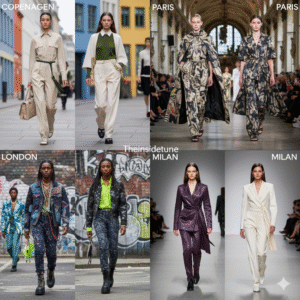
🕺 Fashion Weeks: Runways Without Boundaries
European fashion weeks are no longer about showing men’s and women’s collections separately. Increasingly, they’re presenting genderless collections in unified shows.
-
In Paris Fashion Week 2025, big houses like Balenciaga, Dior, and Maison Margiela featured non-binary models front and center, styled in clothing that defied traditional categories. Dresses with sharp tailoring, oversized blazers paired with skirts, accessories worn freely across genders—it wasn’t “for him” or “for her.” It was simply for fashion lovers.
-
London Fashion Week leaned into its rebellious spirit. Streetwear labels merged with couture, showing everything from unisex cargo trousers to glittered corsetry worn on male-presenting bodies. London’s underground always thrived on breaking rules, and now it’s proudly mainstream.
-
Milan Fashion Week added its flair with Italian brands focusing on fluid tailoring and craftsmanship—genderless suits with precision cuts, oversized coats designed to fit any body type, and luxe fabrics that moved gracefully, regardless of who wore them.
What’s striking is how normal it all feels in 2025. The applause isn’t for shock value anymore—it’s for creativity, inclusivity, and the artistry of designing clothes for people, not gender labels.
✨ Regional Aesthetics: Europe’s Diverse Flavor
One of Europe’s strengths is how different regions bring their own cultural DNA into gender-neutral fashion.
-
Scandinavia 🇩🇰🇸🇪🇳🇴: Known for minimalism and sustainability, Scandinavian brands are making gender-neutral wardrobes a lifestyle. Think sleek, neutral-toned trousers, oversized knits, and functional outerwear. Brands like Ganni and Acne Studios are focusing on comfort, clean lines, and eco-friendly materials. For them, inclusivity isn’t a trend—it’s everyday life.
-
Paris, France 🇫🇷: Always the avant-garde capital, Paris blends theatricality with elegance. Designers push boundaries with flowing fabrics, deconstructed silhouettes, and bold accessories that work across genders. Think draped tunics with combat boots or tailored suits softened with chiffon—Paris thrives on contradiction.
-
London, UK 🇬🇧: London’s fashion scene has always been the rebel child. In 2025, it’s the hub of gender-fluid street style. Oversized hoodies layered with skirts, chunky sneakers with satin blouses, denim paired with corsets. Local designers feed off the city’s youth culture, activism, and music scene, making it a playground for experimentation.
-
Berlin, Germany 🇩🇪: Berlin leans into gritty, edgy minimalism with a hint of nightlife culture. Black leather, genderless tailoring, and club-inspired androgyny dominate. It’s functional, urban, and unapologetically bold.
These aesthetics show how gender-neutral fashion isn’t a “one-size-fits-all.” It’s shaped by local values—sustainability in the North, rebellion in the UK, artistry in France, subculture in Germany.
🏷️ Local Brands Leading the Inclusivity Wave
While luxury houses dominate headlines, local and emerging European brands are the real pioneers of inclusivity.
-
Collusion (UK): A youth-led label creating affordable, gender-neutral clothing for everyday wear. Oversized tees, denim, and playful streetwear accessible to all.
-
Telfar Europe (expansion): Already iconic in the US, Telfar’s European collaborations are creating buzz. Their motto, “Not for you—for everyone,” perfectly captures the spirit of 2025.
-
Études (France): A Paris-based collective blending art and fashion, producing fluid collections that highlight individuality rather than gender.
-
Nudie Jeans (Sweden): Pioneering sustainable, unisex denim with repair programs and a focus on circular fashion (tying back beautifully to the earlier blog theme).
-
Emerging Berlin Labels: Small collectives are producing handmade, upcycled pieces with genderless sizing—often sold in concept stores or directly on social media platforms.
These brands prove inclusivity isn’t just about who walks the runway. It’s about who can afford and access these clothes in real life.
🌍 Why Europe? The Social Context
It’s not just fashion weeks or aesthetics that make Europe the epicenter—it’s the cultural climate.
-
Progressive policies around LGBTQ+ rights and gender identity have created safer spaces for self-expression.
-
Generational shifts (hello Gen Z and Gen Alpha!) have pushed inclusivity to the forefront of consumer demands.
-
Sustainability plays a role, too. By creating one line for everyone instead of duplicating “men’s” and “women’s,” brands reduce waste and simplify production.
In short, Europe is leading not just because of fashion heritage, but because of social openness, cultural experimentation, and consumer demand for change.
💡 Takeaway: Europe in 2025 isn’t just showing gender-neutral fashion—it’s normalizing it. Whether through Parisian drama, London’s rebellion, or Scandinavian simplicity, the continent has become the ultimate runway for inclusivity.
👉 Next up: The Role of Gen Z and Gen Alpha: Redefining Fashion Norms 👩🎤👨🎤. Because while designers shape trends, it’s young people who are truly rewriting the rules of gender and style.
Everyday Gender-Neutral Fashion 👕👖: Where Comfort Meets Identity
When you think of fashion revolutions, you might picture runways, flashing lights, and models striding in bold, conceptual outfits. But the real revolution? It’s not happening under the spotlights — it’s happening on the streets, in classrooms, in cafes, in offices, and in homes. Everyday fashion is where the gender-neutral movement becomes truly powerful, because it’s where people live their truth.
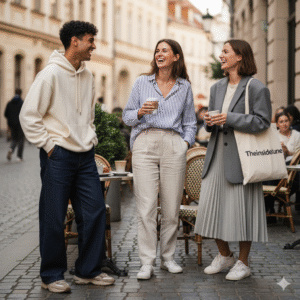
In 2025, across Europe, clothes are no longer silent markers of “male” or “female.” They’re tools of comfort, identity, and creativity — chosen not because they should be worn, but because they feel right.
☕ A Morning in Berlin: Fashion Without Labels
Picture this: it’s a chilly morning in Berlin. People are heading to work, grabbing coffee, or biking to class. Look around and you’ll see:
-
A young professional wearing a long tailored coat with wide-leg trousers, sipping espresso by a café window.
-
A student zipping by on their bike in baggy jeans, a hoodie, and chunky sneakers — items that could come from anyone’s closet.
-
Two friends laughing as they walk to class, one in a flowy skirt with a bomber jacket, the other in a structured blazer with shorts — both comfortable, both stylish, both free from labels.
In this ordinary city scene, you can already feel the shift: clothes aren’t about declaring gender anymore. They’re about telling stories — of mood, of personality, of self.
🧢 Streetwear as Everyday Language
Streetwear has become the universal language of gender-neutral style. Why? Because it’s built around flexibility, ease, and layering — all things that transcend binary categories.
-
Oversized hoodies are no longer “borrowed from your boyfriend” — they’re just yours.
-
Cargo pants, once seen as “masculine,” are now a staple for anyone who wants pockets and practicality.
-
Sneakers? Completely unisex. A pair of Nike Dunks or Adidas Sambas doesn’t care about your gender — it just cares if you can rock them.
Streetwear also thrives on mixing and matching. A satin slip dress under a bomber jacket. A cropped tee with slouchy trousers. A skirt styled with high-top sneakers. It’s playful, expressive, and deeply personal.
🧥 Workwear Without Borders
The workplace has always been one of the most rigid spaces for fashion. For decades, men had their suits, women had their skirts or “feminine” tailoring, and straying too far from those norms could raise eyebrows.
But in 2025, offices in cities like Paris, Stockholm, and Amsterdam look very different.
-
The new power suit isn’t about gender. It’s about fluid tailoring: slightly oversized blazers, trousers with adjustable waists, softer shoulders, and cuts that flatter without conforming.
-
Footwear like loafers, brogues, and boots are sold in ranges that skip gender categories — sized simply from smallest to largest.
-
Workwear essentials like shirts, coats, and trousers are being marketed as functional pieces for all, focusing on fabric quality and fit adaptability rather than gender-specific tailoring.
This change doesn’t just make fashion more accessible — it makes workplaces more inclusive. People feel more at ease, more authentic, and more able to focus on work rather than fitting into outdated dress codes.
🧵 Essentials for Every Body
At the heart of everyday gender-neutral fashion are essentials — pieces that anyone can pick up, wear, and style their way.
Some of the most popular in 2025:
-
Relaxed-fit jeans: adaptable, comfortable, and often designed with stretch or adjustable waists.
-
Oversized T-shirts & button-downs: timeless, versatile, and styled with jewelry, belts, or layering to make them uniquely yours.
-
Neutral-toned outerwear: trench coats, denim jackets, and shackets that go with anything.
-
Matching sets: cozy co-ords in soft fabrics or chic monochrome looks that can lean casual or formal.
These items work like a blank canvas — they don’t tell you how to wear them, they invite you to make them your own.
🛍️ Shopping in 2025: No More “Men’s” or “Women’s” Sections
One of the most noticeable changes in everyday life is how stores are organized. Walk into a shop in 2025 and instead of separate “Men’s” and “Women’s” sections, you’ll find:
-
Style-based layouts: “Streetwear,” “Essentials,” “Formal,” “Outerwear.”
-
Fit filters online: Instead of “men’s medium” or “women’s large,” you’ll choose based on your body type, height, or preferred fit (slim, relaxed, oversized).
-
Inclusive changing rooms: Many stores now offer unisex fitting rooms, creating a safe, welcoming space for all shoppers.
High-street brands like Zara, COS, and H&M have embraced this shift, while independent boutiques across cities like Copenhagen, Lisbon, and Vienna curate gender-neutral collections as their core identity.
🌍 Beyond the Clothes: Why Everyday Gender-Neutral Fashion Matters
Here’s the thing: when fashion stops being about gender, it starts being about people.
For some, everyday gender-neutral fashion is about comfort and convenience — one wardrobe for every mood, simplified and versatile. For others, it’s about freedom and identity — rejecting old rules that never fit them. And for many, it’s about confidence — finally being able to dress without the fear of judgment.
It’s a quiet but powerful revolution: one hoodie, one blazer, one pair of sneakers at a time.
💡 The beauty of everyday gender-neutral fashion? It doesn’t shout. It doesn’t demand attention. It simply exists — woven seamlessly into daily life, reshaping what it means to get dressed in the morning. And that quiet normalcy is what makes it revolutionary.
🌐 The Role of Culture and Media in Shaping Gender-Neutral Fashion 🎬🎶✨
Fashion is never just about fabric and stitches—it’s about stories, identity, and the culture we live in. And when it comes to the rise of gender-neutral fashion, media and culture are the fuel that make the fire spread.
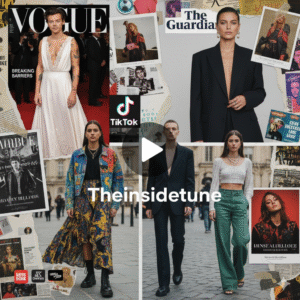
Think about it: every time a celebrity steps onto a red carpet in something unexpected, or a music video drops where clothing has no “gender labels,” it sparks conversations. These conversations, in turn, shape how people see what’s possible. 🌍💬
Take Harry Styles, for example. When he wore a Gucci gown on the cover of Vogue, it wasn’t just about looking fabulous (though he did). It was a cultural reset. Suddenly, the idea of a man in a dress wasn’t confined to fringe spaces—it was splashed across glossy magazine covers in living rooms worldwide. People argued, debated, celebrated, but most importantly, they noticed. That moment cracked open the door for many who were waiting for permission to explore clothing outside the binary.
Then there’s Billie Eilish, whose oversized, androgynous style became a symbol of rejecting the male gaze. She showed young fans that you don’t have to dress a certain way to be valid, powerful, or beautiful. Later, when she switched to corsetry and silk dresses, it wasn’t a betrayal of her style—it was proof that identity and self-expression can shift, bend, and flow. That’s the heart of gender-neutral fashion: freedom of choice. 🖤
🎶 Music, Film, and Social Media as Fashion Catalysts
-
Music: From David Bowie’s glam-rock rebellion (which still inspires designers in Paris and London today) to contemporary European acts like Christine and the Queens—who openly blends masculine and feminine energies—music has always been ahead of the curve. Stages often become fashion laboratories.
-
Film: French and Italian cinema have long blurred gender lines through costume design. Movies like Orlando (set in Europe, featuring Tilda Swinton) explored gender fluidity decades before it was mainstream. Today, streaming platforms showcase diverse characters whose wardrobes reflect identities beyond “his and hers.”
-
Social Media: TikTok and Instagram are arguably the biggest “runways” in the world right now. Streetwear influencers in Berlin, minimalist creators in Copenhagen, or DIY upcyclers in Barcelona all share their takes on gender-neutral fashion. And millions are watching, liking, and recreating these looks at home.
🕺 Europe’s Cultural Push
Europe, in particular, has become a hub for these shifts because of its intersection of art, politics, and social activism. London’s rebellious street culture, Paris’s avant-garde artistry, and Berlin’s underground club scene constantly feed into the fashion industry. When brands like Loewe, Balenciaga, and JW Anderson send androgynous looks down the runway, they aren’t just selling clothes—they’re responding to a cultural moment that demands inclusivity.
🌈 Why This Matters
Media and culture don’t just make fashion “trendy”—they make it visible. For a teen scrolling TikTok in a small European town, seeing a non-binary influencer confidently wearing a skirt can be life-changing. Representation plants seeds of possibility. It tells people: “You’re not weird, you’re not alone, and yes—you can wear whatever feels right.”
In 2025, culture and media aren’t just reflecting gender-neutral fashion—they’re accelerating it, turning what was once niche into something celebrated. And as the media cycle spins faster than ever, these ideas spread from runway to street, from Instagram feed to classroom hallway, reshaping not just wardrobes but identities.
💼 The Business of Gender-Neutral Fashion in Europe (2025) 💶✨
Fashion is beautiful, but let’s be real—it’s also a business. And in Europe 2025, the business of gender-neutral fashion is booming like never before. What once seemed like a niche movement is now a mainstream market with real money, real customers, and real global influence.
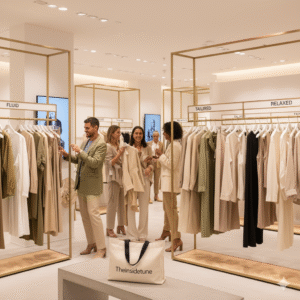
🛍️ Retail Revolution: Beyond “Men’s” and “Women’s” Sections
Walk into a department store in Paris or Berlin today, and you’ll notice something striking: the clear boundaries between “Men’s” and “Women’s” sections are fading. Instead, more retailers are experimenting with fluid layouts—grouping clothes by style, fabric, or color rather than gender.
Big retailers like Selfridges in London started this trend years ago with their “Agender” project, but in 2025, it’s everywhere—from Copenhagen’s boutique stores to global chains in Milan. Shoppers now want to browse without being told, “This is for you” or “This isn’t for you.” The result? A shopping experience that feels more like discovery and less like limitation. 🌈
📊 Numbers Don’t Lie: The Market Boom
Gender-neutral fashion isn’t just a cultural movement—it’s a financial powerhouse. According to European fashion market reports (2024–2025):
-
The genderless fashion market in Europe grew by 25% in the past two years.
-
Younger shoppers (Gen Z & Millennials) are the biggest drivers, with over 60% saying they prefer brands that embrace inclusivity.
-
Scandinavian countries—Denmark, Sweden, and Norway—report the highest adoption rates, thanks to their cultural emphasis on equality and minimalism.
This growth is reshaping how brands design, produce, and market their clothes. Designers aren’t just creating “one unisex T-shirt” to tick the box—they’re building entire collections around fluidity.
👗 Designer Houses Leading the Way
High fashion often sets the tone for what trickles into the streets. In 2025, several European powerhouses are at the forefront:
-
Gucci (Italy): Still carrying forward Alessandro Michele’s legacy of fluid fashion, with runways where men wear chiffon blouses and women wear tailored tuxedos.
-
Balenciaga (France): Their futuristic, oversized silhouettes blur gender lines and continue to dominate both the runway and high-street knockoffs.
-
JW Anderson (UK): Known for pushing the boundaries, Anderson’s collections often feature skirts for men and sculptural dresses that anyone could wear.
-
Loewe (Spain): Combining artistic flair with genderless tailoring, Loewe has become a go-to for those who want style without labels.
But it’s not just luxury brands—local designers and startups across Europe are key players. In Berlin, underground designers create gender-free rave wear. In Stockholm, minimalist brands like Filippa K and Acne Studios focus on sustainability and fluid design. In Barcelona, new labels experiment with playful, androgynous streetwear.
🏪 Online Shopping & Tech’s Role
E-commerce in 2025 is also reshaping the business. Online platforms like Zalando and Farfetch now feature gender-neutral filters—allowing customers to shop by size, cut, or aesthetic rather than “male/female.” This is not only inclusive but also smart: it expands the customer base and reduces the awkwardness of “shopping outside your section.”
Tech is also driving personalization. AI-based shopping assistants in Europe can now recommend outfits based on body type, personal taste, and cultural preferences—without assuming your gender. Imagine logging into a site and seeing suggestions that simply say: “We think you’d look amazing in this”—with no gendered assumptions attached. That’s where we’re at. 🤖✨
🌍 Sustainability & the Circular Economy
Another business angle that ties closely to gender-neutral fashion in Europe is sustainability. Clothes designed without gender in mind are often more versatile, lasting longer in wardrobes and even being shared across households. This feeds directly into Europe’s strong circular fashion movement—rental services, upcycling studios, and thrift stores all benefit from designs that aren’t restricted to one gender.
Take Helsinki’s rental fashion hubs or Amsterdam’s swap shops—where gender-free garments are easier to circulate, making them both eco-friendly and economically viable.
💡 Why Brands Are Betting Big on It
At the end of the day, fashion is about connection. European brands have realized that gender-neutral design isn’t just progressive—it’s profitable. It aligns with the values of younger generations, meets sustainability goals, and opens markets beyond the traditional binary.
A CEO of a Parisian fashion house recently summed it up perfectly:
👉 “We’re not designing for men or women anymore—we’re designing for humans.”
And honestly? That’s the business model of the future.
⚖️ Challenges and Criticisms of Gender-Neutral Fashion in Europe (2025)
As exciting and groundbreaking as gender-neutral fashion is, let’s be honest—it’s not all smooth sailing. While the runways and media paint a glossy picture of inclusivity, behind the scenes there are hurdles, criticisms, and questions that Europe is still figuring out. Because like any cultural shift, fashion that challenges tradition doesn’t come without resistance.
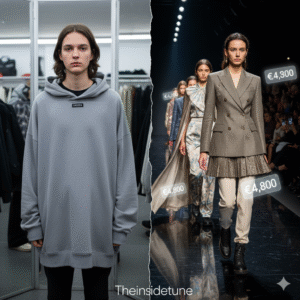
👕 The Fit & Functionality Problem
One of the biggest criticisms of gender-neutral fashion is fit. Clothes designed to be “for everyone” sometimes end up fitting no one particularly well. Oversized silhouettes, boxy cuts, and neutral palettes dominate many collections, but not everyone loves that aesthetic.
-
For people with curvier bodies, many “genderless” garments feel restrictive or unflattering.
-
For those with slimmer frames, oversized pieces can feel like you’re drowning in fabric.
Consumers often ask: “Why can’t inclusivity also mean diversity in cuts and tailoring?” Europe’s fashion industry is slowly learning that gender-neutral shouldn’t mean shapeless—people still want to feel confident and stylish, not like they’re wearing a potato sack.
💶 The Luxury Price Tag Problem
Here’s the irony: many of the most celebrated gender-neutral collections come from luxury houses in Paris, Milan, and London. Gucci, Loewe, Balenciaga—they’re leading the way, yes, but their pieces are out of reach for the everyday shopper.
Meanwhile, high-street retailers like Zara or H&M dabble in unisex designs, but critics argue that these are often surface-level efforts—a plain T-shirt labeled “unisex” rather than a thoughtfully designed, inclusive piece. For gender-neutral fashion to truly thrive, it needs to be accessible at all price points, not just for the wealthy.
🌍 Cultural & Generational Resistance
Europe may be progressive in many ways, but cultural traditions run deep. In countries like Italy or Spain, where gender roles have historically been tied to fashion (the sharp Italian suit for men, the chic feminine dress for women), some consumers see gender-neutral fashion as confusing or even threatening.
-
Older generations often ask: “Why can’t men just dress like men and women like women?”
-
Conservative media outlets occasionally frame gender-neutral clothing as “erasing tradition.”
While younger Europeans (Gen Z, Millennials) largely embrace fluid fashion, there’s still cultural friction in more traditional households and communities.
🛍️ The Retail Dilemma
We’ve talked about how some European retailers are dissolving the binary “Men’s” and “Women’s” sections—but this creates logistical challenges:
-
Sizing: Do you use men’s sizes, women’s sizes, or invent a whole new chart?
-
Store layout: How do you design a space that feels welcoming but not confusing?
-
Marketing: Do you advertise gender-neutral clothing with male, female, or non-binary models—or all of the above?
Many brands are experimenting, but there’s no single solution yet. Some customers love the change, while others feel lost without the familiar structure.
💭 Tokenism vs. True Inclusivity
Another critique is tokenism. Some brands jump on the gender-neutral wave just to appear progressive—throwing a skirt on a male model for a photoshoot, or marketing an old hoodie as “unisex.” Activists and critics in Europe are quick to call out these shallow efforts.
For inclusivity to be authentic, it has to go deeper:
-
Hiring non-binary and transgender designers.
-
Featuring diverse models beyond one-off campaigns.
-
Designing clothes that genuinely consider different body types and needs.
As one activist in Berlin put it: “Gender-neutral fashion shouldn’t be a costume—it should be a commitment.”
♻️ Sustainability Concerns
Ironically, some gender-neutral collections clash with Europe’s push for sustainability. Oversized trends, constant new capsule launches, and mass-market “unisex basics” can still feed into fast fashion cycles. Critics argue that if gender-neutral fashion is truly about freedom and inclusivity, it should also embrace long-lasting design and slow fashion principles—not just another excuse for mass consumption.
🌈 The Bright Side of Criticism
Here’s the good news: these challenges aren’t roadblocks—they’re opportunities. Criticism forces European brands to do better, think harder, and design smarter. It pushes the movement away from being a passing trend toward becoming a lasting transformation in how we think about clothes.
After all, fashion has always thrived on rebellion, discussion, and even controversy. What matters most is that in 2025, the conversation around gender-neutral fashion is loud, alive, and impossible to ignore.
🔮 The Future of Gender-Neutral Fashion: Where Europe is Heading Beyond 2025 🚀🌈
If the last few years have taught us anything, it’s this: gender-neutral fashion isn’t a passing trend—it’s a movement that’s reshaping the very DNA of style. And as we look beyond 2025, Europe is set to remain at the epicenter of this fashion revolution.
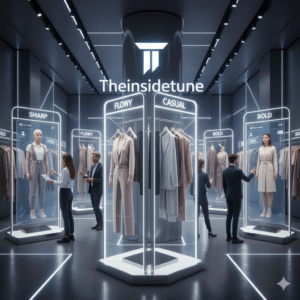
Why? Because Europe has always been more than just a fashion hub. It’s a cultural laboratory—where art, politics, technology, and social values collide. From Paris’s haute couture houses to Berlin’s underground club scenes, Europe thrives on reinvention. And when it comes to gender-neutral fashion, the future looks bold, experimental, and beautifully human.
👗 Clothing Without Labels, Just Expression
In the coming years, we’ll likely see a complete dissolution of the idea that clothes “belong” to men or women. Imagine walking into a store in Milan in 2030 and finding no gendered categories at all—just racks of garments labeled by silhouette, fabric, or vibe.
Instead of “menswear” and “womenswear,” we might have:
-
Sharp & Tailored 🕴️
-
Flowy & Fluid 🌊
-
Casual & Comfort ☁️
-
Bold & Experimental 🎭
This isn’t just about inclusivity; it’s about freedom. Shoppers will build wardrobes based on mood and identity—not outdated categories.
🤖 Tech & Fashion Collide
Europe is also at the forefront of merging fashion with technology, and gender-neutral fashion will benefit massively from this:
-
AI-Powered Styling: Imagine an AI in London that curates looks for you based not on gender but on your personal taste, body type, and cultural identity.
-
Virtual Fittings: Paris and Milan fashion houses are already experimenting with VR and AR dressing rooms where anyone can try on clothes virtually—again, with no gender barriers.
-
Digital Fashion: In Berlin, digital-only fashion designers are creating gender-free garments that exist in the metaverse—where your avatar can wear whatever you dream up.
In the future, fashion won’t just be about what you wear in the physical world, but also how you express yourself online. And digital fashion is naturally borderless and genderless.
🌍 Europe’s Global Influence
What happens in Europe doesn’t stay in Europe. When Paris Fashion Week spotlights gender-fluid collections, or Scandinavian brands roll out minimalist unisex wardrobes, the whole world watches. Already, Asian and American markets are picking up cues from Europe’s boldness in inclusivity.
By 2030, we’ll likely see European gender-neutral brands collaborating with designers across continents—building a global coalition of fluid fashion that celebrates culture, individuality, and sustainability all at once.
♻️ The Sustainability Synergy
The future of gender-neutral fashion is also deeply tied to Europe’s obsession with sustainability. Clothes that are versatile and not bound by gender inherently last longer—they can be shared, swapped, or rented across people and families.
Picture a future where:
-
Rental services in Copenhagen thrive because genderless designs allow wider circulation.
-
Upcycling studios in Amsterdam transform old garments into fluid, timeless pieces.
-
Clothing is designed to transcend seasons and identities, making fast fashion obsolete.
This isn’t just good for style—it’s good for the planet. 🌱
🏳️🌈 The Social Ripple Effect
Most importantly, the rise of gender-neutral fashion will impact more than wardrobes. It will reshape how society talks about gender, identity, and freedom. Europe—already a leader in LGBTQ+ rights and progressive policies—is showing that fashion can be a form of quiet activism.
-
Schools in Sweden have experimented with uniforms that are gender-neutral, allowing kids to dress comfortably without labels.
-
Workplaces in Germany and France are beginning to adopt inclusive dress codes that allow employees to express themselves freely.
-
Cultural festivals across Europe, from Pride in Madrid to Berlin’s art and music scenes, are amplifying the message: clothes are tools of expression, not cages of conformity.
Fashion has always mirrored society, but in this case, it’s also helping shape it. ✨
✨ A Vision Beyond 2025
So, what does the future look like? It looks like a closet where clothes aren’t tagged with “his” or “hers.” It looks like young people in Barcelona, Paris, or Helsinki dressing exactly how they feel—without fear or hesitation. It looks like a world where fashion is less about boxes and more about possibilities.
Europe is leading this charge not because it has all the answers, but because it dares to ask the bold questions. And as 2025 unfolds into the next decade, one thing is clear: gender-neutral fashion isn’t just the future—it’s already here.
🌟 Conclusion: Gender-Neutral Fashion as a Movement, Not a Moment ✨
As we stand in Europe in 2025, it’s clear: gender-neutral fashion is no longer a side trend—it’s a movement reshaping the very soul of style. What began as bold statements on runways or underground scenes has now spilled into everyday wardrobes, workplaces, schools, and social media feeds.
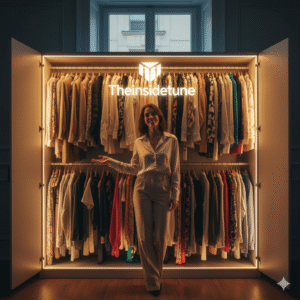
This shift isn’t just about clothes. It’s about freedom, choice, and identity. It’s about dismantling outdated boxes and letting people express themselves on their own terms. When we strip away the “Men’s” and “Women’s” labels, what we’re left with is something far more beautiful: fashion that celebrates humans.
💡 What We’ve Learned from Europe’s Journey
Europe has proven to be the perfect stage for this transformation:
-
Paris and Milan turned gender-fluid couture into global statements.
-
Scandinavian cities showed how minimalism, inclusivity, and sustainability can coexist.
-
London and Berlin used their rebellious, artistic energy to make gender-neutral fashion a cultural revolution.
-
Local communities across Europe—from thrift shops in Amsterdam to rental platforms in Helsinki—have proven that inclusivity isn’t just luxury, it’s accessible and practical.
At the same time, challenges remind us that this movement is still evolving. Issues of fit, accessibility, tokenism, and cultural resistance highlight that progress isn’t perfect—but it’s happening. And in fashion, that’s always been the way forward: experiment, get it wrong, try again, break boundaries, keep moving.
🌈 The Bigger Picture
Gender-neutral fashion is also deeply tied to other urgent conversations—sustainability, identity, equality, and cultural freedom. In many ways, it’s a bridge. A bridge between tradition and innovation, between the runway and the street, between fashion as an industry and fashion as self-expression.
And maybe that’s the real beauty here: gender-neutral fashion isn’t telling us who to be—it’s finally letting us decide for ourselves.
🚀 Looking Ahead
As Europe continues to lead this charge beyond 2025, one thing is clear: the future of fashion is not binary, it’s boundless. It’s about designing for humans, not categories. It’s about creativity that transcends labels. It’s about closets that reflect moods, not rules.
And perhaps, decades from now, we’ll look back at this era not as the time when fashion “broke the rules”—but as the time when we finally realized there never needed to be rules in the first place.
So the next time you step into your wardrobe, ask yourself:
👉 Are you dressing for “men” or “women”?
Or are you dressing for you?
Because that, ultimately, is the future Europe is stitching together—thread by thread, outfit by outfit, choice by choice. And it’s a future that belongs to all of us. 🌟


